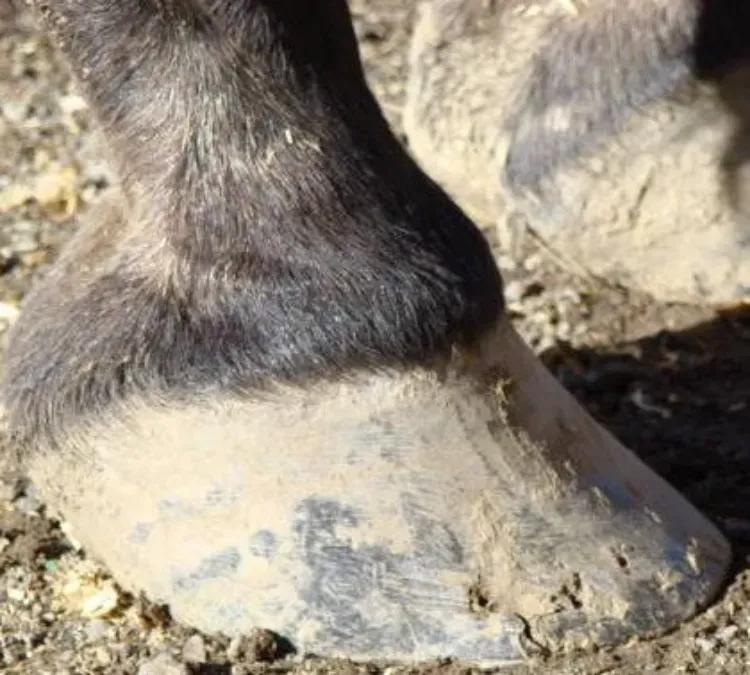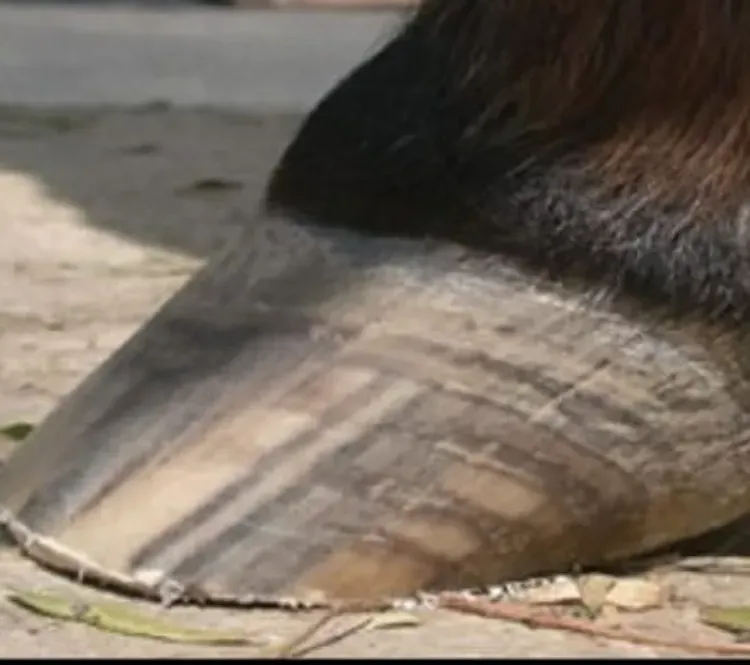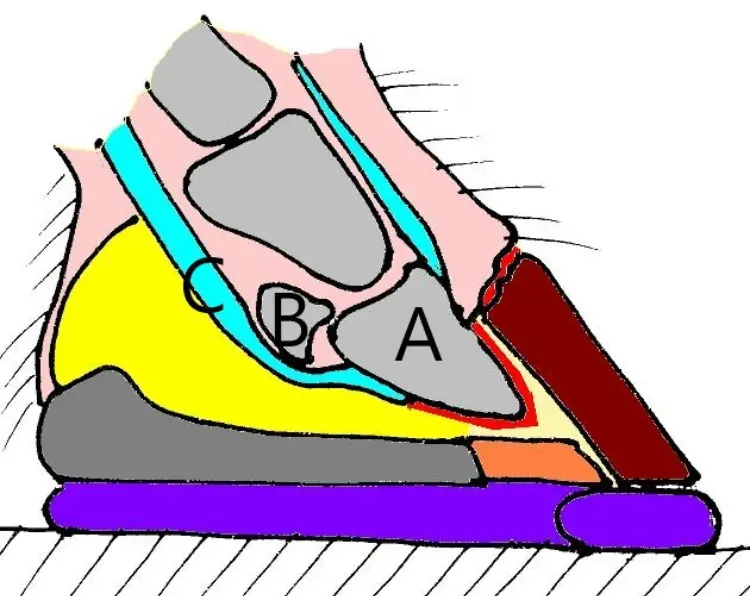
Horse feet are not always the best shape for long-term soundness.
This article looks at Low Heel Conformation and the effect this has on your horse. So what is low heel conformation?

Low Heel Conformation
With low heel conformation, the heel of the foot is too shallow. The heel bulb is too close to the ground and the heels are collapsed.
Two other conformational faults are frequently associated with low heels:
- Long toe
- Underrun heel.
These two additional conformational problems go hand in hand.

Long Toe
Long toes exist where the hoof pastern axis (HPA) is negative. This means the hoof angle is shallower than the pastern angle. When this happens the heels become underrun.
Low heel with a long toe. Notice the pastern is steeper than the hoof.

Underrun Heels
Underrun heels happen when the hoof wall does not extend as far back as it should do.
The heel should extend to the widest part of the frog. In this example, the heel is seriously underrun.
What causes a Collapsed Heel
- Inherited conformation
- Changes caused by poor foot care/farriery
Whatever the cause, really low heels are a problem for your horse’s soundness. The problem is even more significant with long toes and underrun heels.
Leaving the gap between reshoeing of more than 5 or 6 weeks and incorrect shoeing techniques will potentially affect your horse’s feet. The foot can change shape and become long-toed with underrun heels. This is particularly the case with foot conformation inclined to these mechanical problems.
The effect on your Horse
- Underrun heels do not permit the digital cushion to act as a shock absorber and support internal soft and hard structures
- Long toes alter the bone angulation in the foot and predispose the horse to digital cushion pain
- Shallow heels without a negative HPA also affect bone angulation and can cause the same problems
It is important to manage the feet well to minimise the development of digital cushion pain. Now we need to look at the parts of the hoof damaged.

Areas of the Hoof Damaged
- Coffin bone (A)
- Coffin bone joint
- Navicular bone (B)
- Deep digital flexor tendon (C)
- Navicular Bursa (between navicular bone and DDFT)
- Supporting ligaments
When any of these areas are affected your horse has navicular syndrome.
Your Horse’s Action will Change
Look for performance-related changes:
- Excessive toe wearing and a toe first-foot landing action
- A pottery short action, particularly noticed when traveling downhill
- Pointing the foot rather than standing square
- Reluctance to perform athletic activities.
Identifying Navicular Syndrome
Nerve blocking the palmar digital nerve will help isolate the problem area. An X-ray will identify most bone changes to the navicular and coffin bones. Subtle bone changes and soft tissue damage can be identified through an MRI scan.
Prevention
For collapsed heels, X-rays will reveal the extent of a negative HPA. Your farrier will use these X-rays to decide on the best remedial action. The approach is to:
- Reducing the toe length
- Altering the hoof pastern axis
- Providing heel support.
Treatment
A horse with navicular syndrome will have treatments and procedures depending on where the problem is. Veterinary support will decide on the best path to take and available options. Nevertheless, navicular syndrome is a chronic problem and for many horses, the prognosis is not good.
These strategies are often used:
- Oral pain killers and anti-inflammatories
- Tidren intravenous injections for bone damage
- Adequan/Cartrophen intra-muscular injections for soft tissue problems
- Steroid injections into the navicular bursa
- Surgery involves cutting the nerves to the foot (but these nerves will regrow and in the meantime, any additional foot problems will go unnoticed as the horse will feel no pain).

Article Suggestion
A Snapshot – Contracted Heels and my Horse
